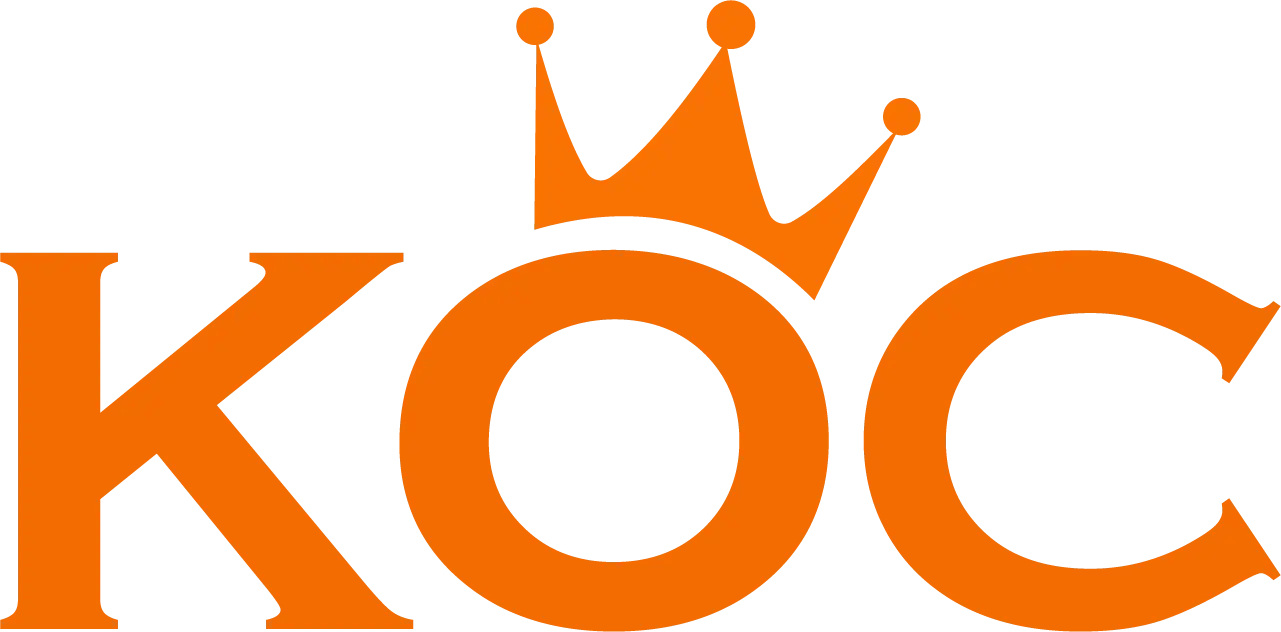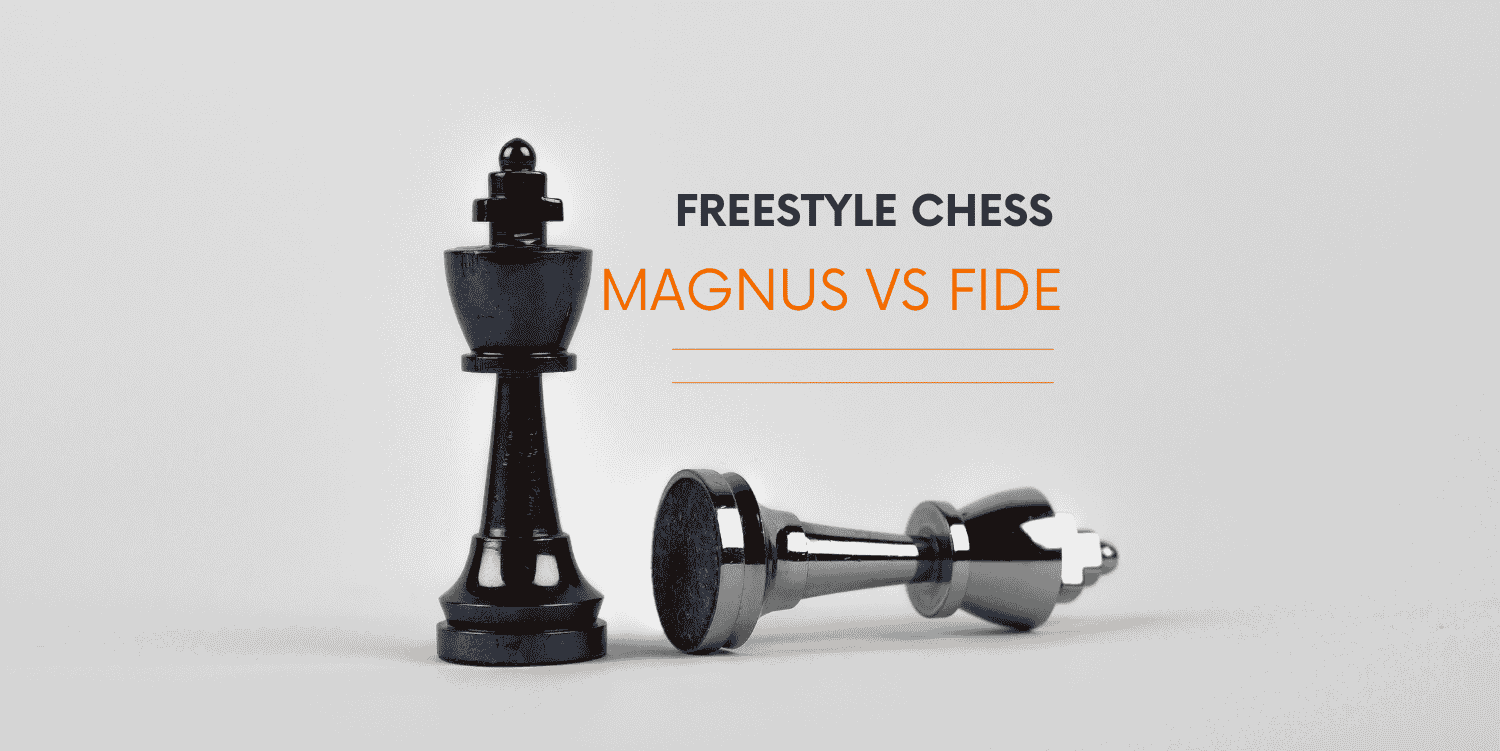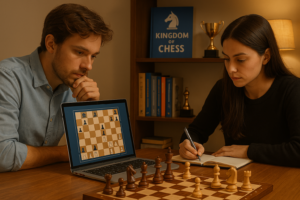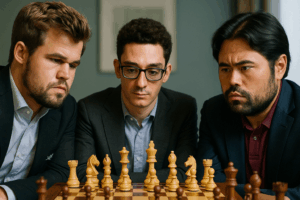Introduction:
In normal chess, the board always starts the same way: pawns in the second row, rooks in the corners, knights beside them, bishops and the queen and king in the center.
Enter Freestyle Chess to change things up. It is a broad concept that can manifest itself in as many shapes and forms. The most widely used version is known as Chess960, or Fischer Random Chess, named after the chess grandmaster Bobby Fischer, who invented it. In Chess960, the pawns stay put whilst the pieces on the back row (the rooks, knights, bishops, queen and king) are set up randomly before play begins.
Why does this matter? Because the pieces always begin in the same place, players in traditional chess can study and memorize the best opening moves for each game. Some games feel more like a memory test than a skill test. The random setup in Freestyle Chess means that you cannot rely on memorized moves. You must think creatively from the very first move. It is still chess—the same goal of checkmating the opponent—but it feels new and unpredictable, which is why players like Magnus Carlsen are excited about it.
Best Online Chess Academy in India
Magnus Carlsen’s Vision: His Push for Freestyle Formats
Magnus Carlsen is currently the world’s best chess player, and he is not only winning games; he is also working to alter them. He thinks there is a problem with traditional chess: too many players, particularly at the beginning of a game, rely on memorization of lengthy move sequences. As a result, both players and spectators may find matches less thrilling. Carlsen wants the game of chess to be less about preparation and more about thought.
From this time on, he advocates freestyle chess. He appreciates Chess960 for how it forces players to instantly utilize their skills, rather than rotely applying what they have been taught. He has even started hosting his own Freestyle Chess battles to illustrate how fun and equitable this format can be. Carlsen, has said that traditional chess, is obsolete in his opinion. He is tired of the lagging pace of FIDE’s experimentation with new ideas, so he is taking matters into his own hands and organizing tournaments of his own, which he hopes will be adopted by others.
FIDE’s Standpoint: Traditional Chess Rules and Why They Resist Freestyle
The International Chess Federation, or FIDE, has governed chess rules and competitions for more than a century. They control everything from the official rulebook to the player rankings to the world championships. They argue that the reason traditional chess works because it is reliable. All rules are the same and everybody knows how the board opens. This enables them to compare players across periods and to say, for instance, that Carlsen is better than past champions of the same game.
FIDE is not completely opposed to new ideas—they have introduced faster versions such as rapid and blitz chess—but they are wary of freestyle chess. They believe that using a single standard format keeps chess organized. Plus, FIDE has a whole system built around traditional chess—ratings, titles, and schedules— and switching to something random might throw that off. For now, they’re saying, “We like chess the way it is”.
The Historical Context
This isn’t the first time chess has faced a big argument. In the 1990s, another leading chess player, Garry Kasparov, had a tussle with FIDE. He didn’t like how they handled money and power, so he started his own group called the Professional Chess Association (PCA). For over a decade, there were two world champions—one from FIDE and one from the PCA.
Magnus Carlsen’s most recent drive for Freestyle Chess has the same sensation. He’s unhappy with FIDE, and he’s making his own way.” And if his plan is successful then we may see another schism where some players follow him, and other stick with FIDE. History suggests that Chess will survive such battles, but it ain’t easy.
Impact on Professional Chess
This showdown between Carlsen and FIDE is going to upend professional chess in a big way. Currently, the majority of the leading players take part in FIDE tournaments, such as the World Championship or large international events. But if Carlsen’s Freestyle Chess gains traction, some could migrate to his events instead. FIDE’s events are the gold standard, with big prizes and prestige. But if Carlsen’s freestyle tournaments get popular—maybe with more money or online fans—they could pull attention away.
Tournaments might change too. FIDE’s events are the gold standard, with big prizes and prestige. But if Carlsen’s freestyle tournaments get popular—maybe with more money or online fans—they could pull attention away.
Freestyle vs. Classical Chess
Let’s go deeper into how Freestyle Chess (especially Chess960) and classical chess are different, because this is where the real action is. In classical chess, the board setup never changes. Pieces are always rook, knight, bishop, queen, king, bishop, knight, and rook moves from left to right, and Black mirrors it. Players spend years learning “openings”—the first moves of a game—like the Ruy Lopez or Sicilian Defense. These openings are like recipes: follow them, and you’re off to a good start. Some pros memorize hundreds of moves deep into a game.
In Freestyle Chess, specifically Chess960, that all goes out the window. The pieces on the back row get randomized before each game (with a few rules: the king must go between the rooks, and bishops go on opposite colors). You could have a queen in the corner or rooks next to each other — anything’s an option! That means no two games open the same way, and memorizing openings doesn’t help. You have to learn things on the go.
Strategy shifts too. In classical chess, the opening phase is slow and deliberate — a player builds their position one move at a time. It’s quicker and wilder in Freestyle because you’re responding to the weird setup. For instance, if your king is next to the edge of the playing field, you may want to guard it immediately instead of going on the attack.
Future of Chess
So, what’s next for chess? So, will FIDE hold onto tradition or embrace the Freestyle chess experiment? They could find a middle ground—perhaps include Chess960 as an official event alongside classical chess. They’ve done this before with rapid and blitz, so it’s not entirely crazy. This way, Carlsen’s wish is granted, without FIDE being left in any way displeased.
But if FIDE declines and Carlsen’s Freestyle Chess takes off, we could have two chess worlds. His events could attract large numbers of viewers, especially online, where fast and fun games tend to be popular. The shine may wear off FIDE if players and fans abandon ship. Conversely, with Freestyle remaining small, FIDE can continue to reign over the chess kingdom. It’s hard to predict, but one thing’s sure: chess is at a crossroads, and the next few years will shape its future.
Conclusion
The battle between Magnus Carlsen’s Freestyle Chess and FIDE’s traditional rules is heating up. Carlsen wants a fresh, exciting game, while FIDE defends the classic way. It’s a tug-of-war between change and stability, and it could affect players, tournaments, and fans. Will chess split, or will it find a middle ground? Only time will tell.






